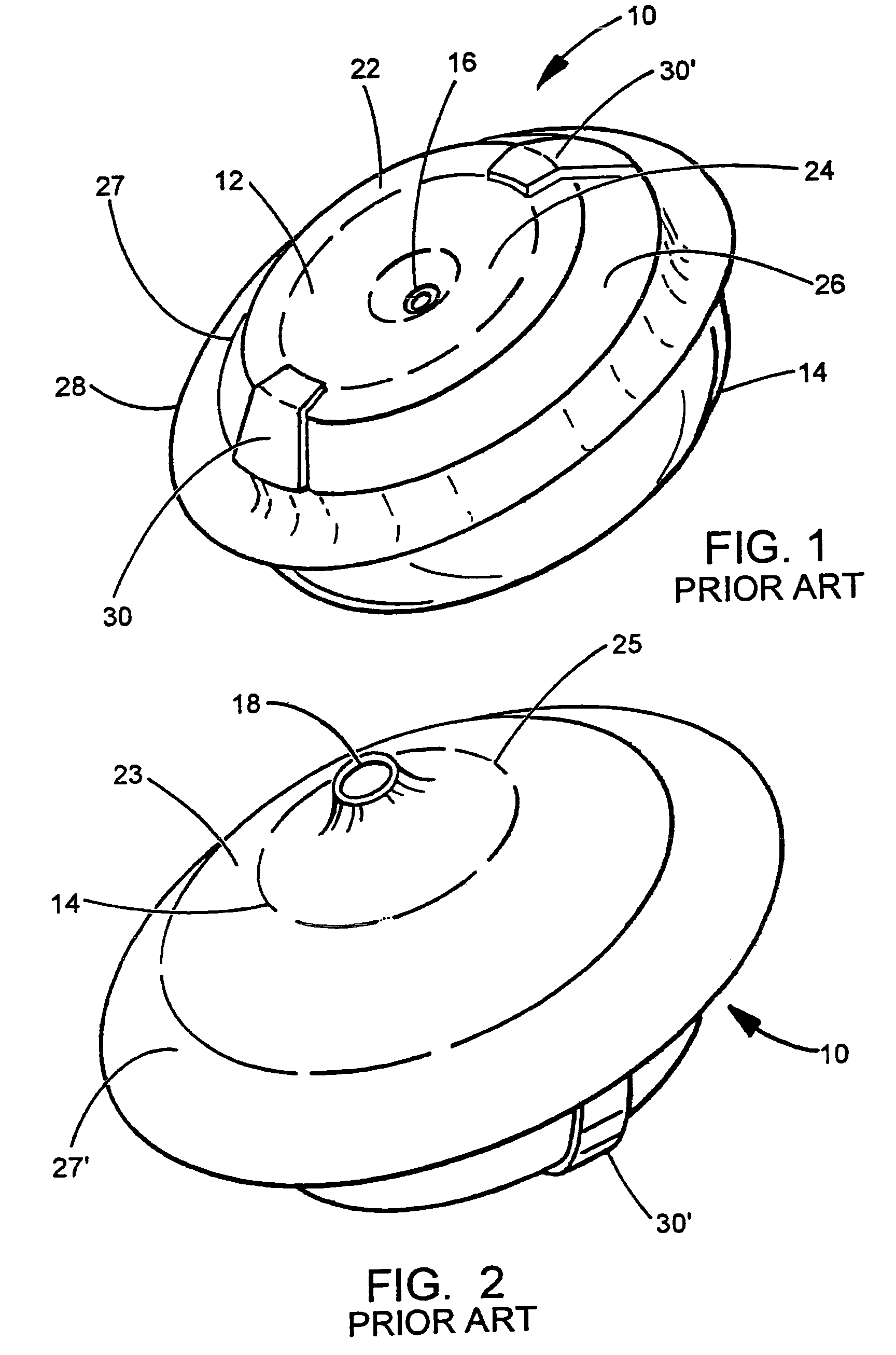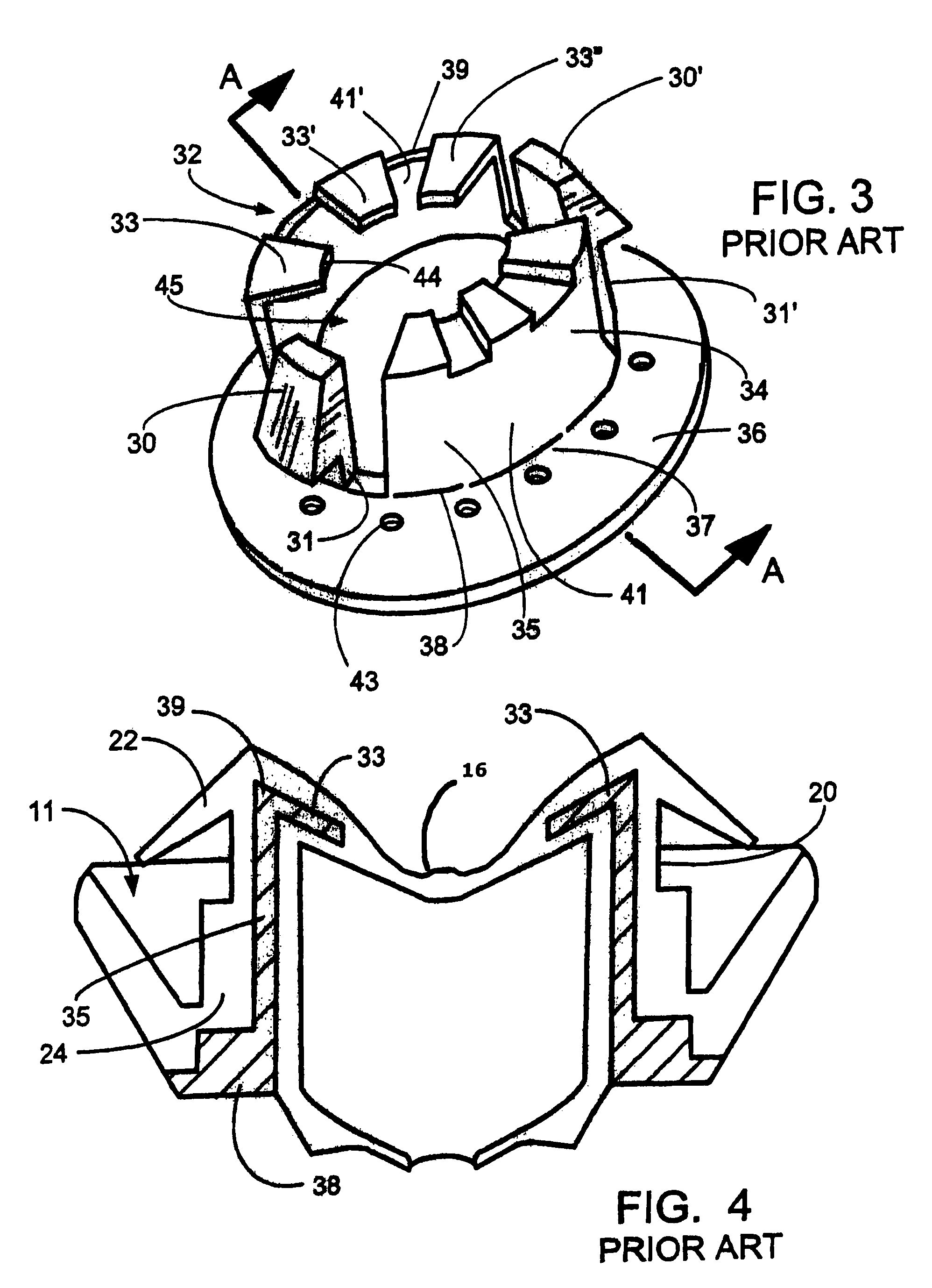Button style cord connector
a cord connector and button-style technology, applied in the direction of coupling device details, coupling device connection, transportation and packaging, etc., can solve the problems of very difficult insertion and pulling out for reusability, very difficult to reuse, and very difficult to reus
- Summary
- Abstract
- Description
- Claims
- Application Information
AI Technical Summary
Benefits of technology
Problems solved by technology
Method used
Image
Examples
Embodiment Construction
[0058]As can be seen initially in FIGS. 13, 14 and 15, reference numeral 50 generally indicates a preferred embodiment of the invention, that is shown applied to a wall 52 of a box 54 (of which only the indicated portion of wall 52 is shown), and specifically within the knock-out opening 56 that is formed in the box. The connector 50 is pushed into the knock-out or opening 56 from one side through an opening in wall 52 in the normal fashion. In essence, the connector 50 sandwiches the perimeter 57 of the knock-out opening 56 in the wall 52 between a pair of tabs 60, 60′ on one side and a rubber-coated flange 90 (over-molded by the elastomeric circumferential ledge 84 as shown) on the other. Flange 90 acts as a stop measure, preventing connector 50 from being pushed completely through the wall opening 56. The outer surface of tab 60 is inclined to ease its insertion through the opening 56. In essence, connector 50 helps isolate wire 58 from the sharp edges of the perimeter 57 of the ...
PUM
 Login to View More
Login to View More Abstract
Description
Claims
Application Information
 Login to View More
Login to View More - R&D
- Intellectual Property
- Life Sciences
- Materials
- Tech Scout
- Unparalleled Data Quality
- Higher Quality Content
- 60% Fewer Hallucinations
Browse by: Latest US Patents, China's latest patents, Technical Efficacy Thesaurus, Application Domain, Technology Topic, Popular Technical Reports.
© 2025 PatSnap. All rights reserved.Legal|Privacy policy|Modern Slavery Act Transparency Statement|Sitemap|About US| Contact US: help@patsnap.com



